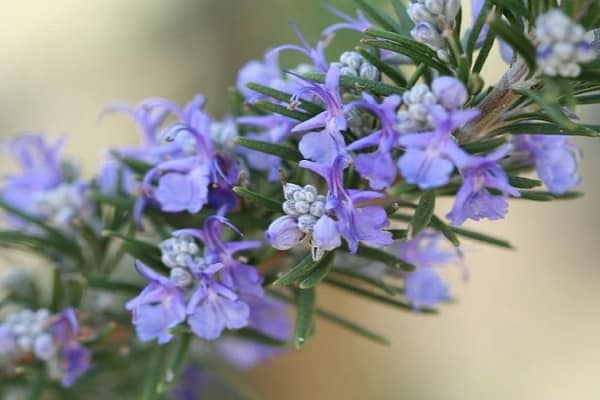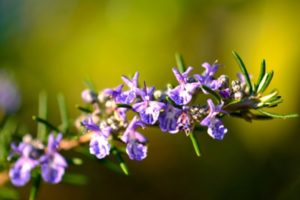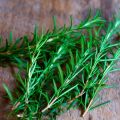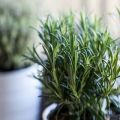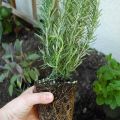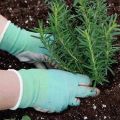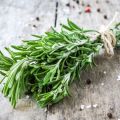Planting and caring for rosemary outdoors
Gardeners from all over the world are involved in planting and caring for rosemary in open ground. This plant has long been considered exotic by no one: it grows in the beds, in greenhouses and on the windowsills of city apartments.
Content
- 1 Rosemary: plant description
- 2 What kind of rosemary is found on sale
- 3 We select the best landing place
- 4 Landing in open ground
- 5 Conditions for good growth outdoors
- 5.1 Lighting and temperature
- 5.2 How to water
- 5.3 Loosening, weeding and feeding
- 5.4 How to trim
- 5.5 How to cover
- 5.6 Plant propagation
- 5.7 How to divide a bush correctly
- 5.8 How to cut
- 5.9 How to root in water
- 5.10 How to root in soil
- 5.11 How to lay down
- 5.12 How to get cuttings without pruning
- 5.13 How to propagate by seeds
- 5.14 How to prepare rosemary for wintering
- 5.15 Pests and diseases
- 5.16 Where is rosemary used?
The Mediterranean aborigine attracts summer residents with its aroma, original appearance. Rosemary is used in cooking, aromatherapy, cosmetology, and perfumery. Traditional medicine offers enough recipes based on an aromatic plant. It's nice to have a fresh, healthy product on hand.
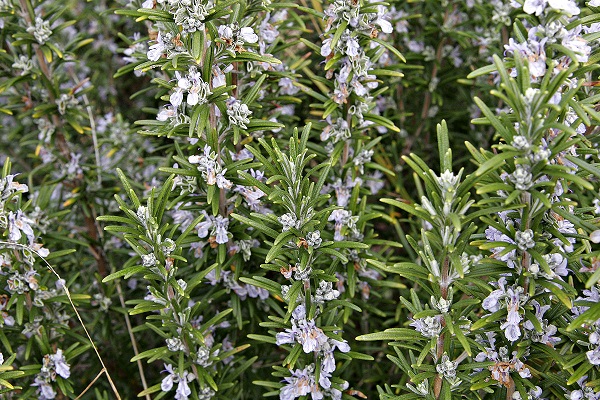
The shrub can actually be grown in the country, subject to the requirements of the plant. It will decorate any flower bed or alpine slide. The phytoncides released by it will heal the air. And as a reward, the gardener will receive the freshest spice for meat or fish: the dacha menu will become more varied.
Rosemary: plant description
It is difficult to confuse a Mediterranean inhabitant with another plant:

- This Mediterranean shrub has leathery evergreen leaves. Their color ranges from green to silver. Elongated shape with a sharp tip.
- The height of the plant in natural conditions (at home) reaches 2 m. Gardeners rarely manage to grow rosemary above 1 m.It usually reaches 50-60 cm.
- In spring, rosemary pleases with the appearance of flowers of white, lilac, pink or purple shades. But with artificial cultivation, the bush pleases with beauty only with proper care.
- The aroma of the plant is multicomponent: it simultaneously resembles the smell of eucalyptus, camphor, pine, lavender, citrus. The released phytoncides refresh and heal the air. The larger the area occupied by the planting, the healthier the atmosphere in the country. But rosemary fully reveals all notes, subject to the rules of cultivation.
- Features of rosemary - the content of vitamins (40% of the daily value of C, A) and folic acid. This makes the plant not only tasty, but also healthy.
The key to the success of growing rosemary in the country is competent agricultural technology. If you follow it, rosemary will delight you with an unusual aroma and pleasant appearance.

What kind of rosemary is found on sale
Specialized stores offer rosemary varieties to gardeners:
- Semko, Tenderness, Vishnyakovsky, Rosinka (developed by Russian breeders);
- Severn Sea (grows to a maximum of half a meter);
- Prоstpatus (shoots spread along the ground, carpet height 15 cm);
- Roseus (differs in flowers of a pink hue);
- Albiflorus (decorated with white flowers).
Foreign varieties are particularly decorative.

We select the best landing place
Rosemary is an inhabitant of the Mediterranean. To grow it in other regions, you should create it as close to native conditions as possible. You need to take care of planting in advance: only in this case the gardener will get the desired result.
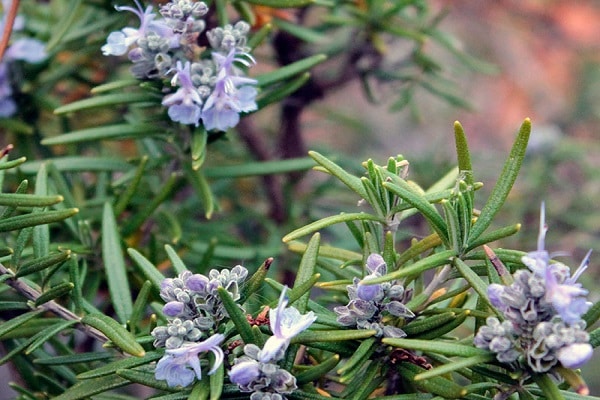
Accommodation at home
“Urban summer residents” also successfully grow rosemary. At home, it is realistic to create suitable conditions:
- put rosemary on the southern, southwestern or southeastern windowsill (if there are none, the western or eastern ones will do);
- the bush requires additional lighting (an agrolamp is suitable);
- to ensure the required air humidity, it is recommended to pour a layer of expanded clay 2-3 cm thick over the ground of the pot (when it is moistened, the water evaporates, and the air around the rosemary becomes comfortable);
- plant roots need air access: rosemary should be planted in a clay container;
- the shrub should be replanted once a year (the pot should be 2/3 larger than the previous one);
- a guest from the Mediterranean is afraid of drafts: when airing, it is required to protect him with a plastic screen.
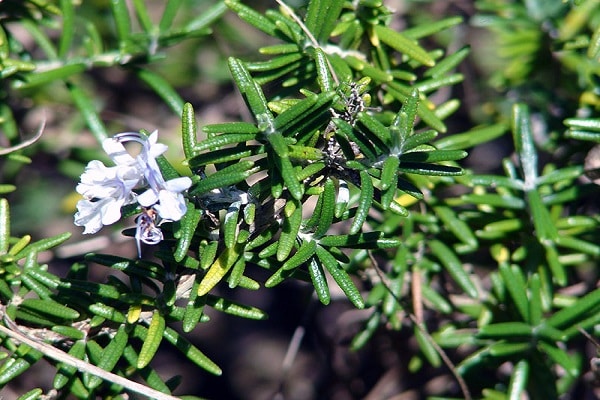
Subject to all the rules, the plant will delight the gardener with aroma and original flowers. But the British claim that at home rosemary grows only from good owners.
Landing in the country
Before planting on the site, the gardener should carry out preparatory work. At home, rosemary is an unpretentious plant. But in regions with excellent climatic conditions, careful preparation is required. The shrub feels great in the place:
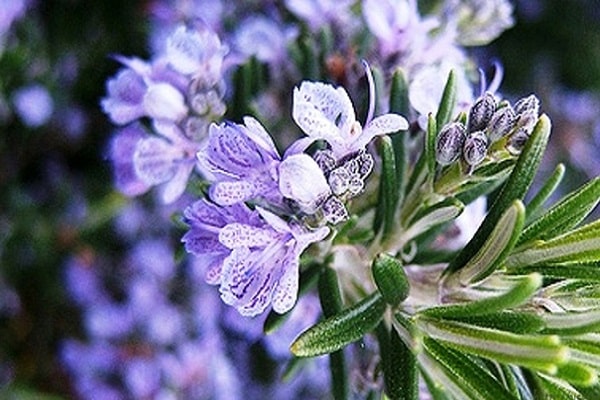
- the sunniest and warmest;
- protected from cold northerly winds;
- with deep groundwater;
- with alkaline, light soils.
Placement on the south side of the house is ideal. The wall will cover the rosemary from the north winds. It heats up during the day and gives off heat to the plant at night.
Rosemary does not tolerate shading. In insufficient light, it withers and sheds leaves.

On flooded areas, drainage should be poured into the planting pit. Crushed stone, broken red brick, gravel, expanded clay are suitable. Layer thickness - 5-10 cm.
Rosemary placed in the garden does not tolerate weeds in the neighborhood: the soil around must be clean. In dry summers, mulching of the earth with a layer of 5-7 cm is allowed.
If the soils do not meet the required characteristics, it is necessary to carry out structuring at the intended planting site..
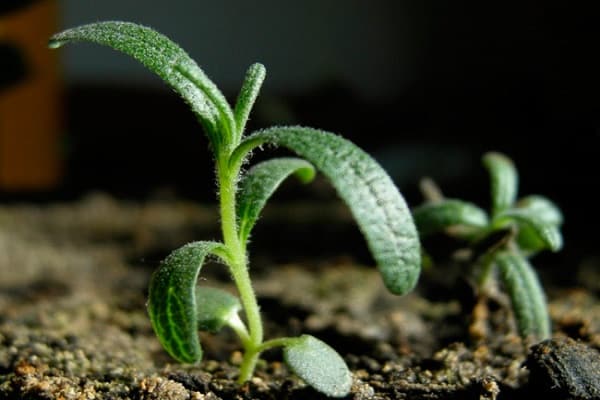
In the greenhouse
Some gardeners have enough space to accommodate a plant in a greenhouse. In regions with harsh climates, gardeners try to grow rosemary in heated greenhouses. Subject to the rules of cultivation, summer residents have spicy herbs on the farm all year round. Some sell cut shoots: the demand for this exotic spice is great.
What the plant needs:

- light calcareous soils with an admixture of rubble;
- no neighbors-weeds or cultivated plants;
- moist warm air;
- lack of drafts;
- temperature in summer is 25-26 degrees Celsius, in winter 5-15;
- daylight hours 16-18 hours.
Summer residents often plant rosemary in an unheated room. In this case, the plant is ready for cutting 2-3 months earlier than planted outdoors. Leave a bush in such a greenhouse for the winter only during relatively warm winters: the temperature should not fall below zero. Otherwise, the guest from the south will freeze.
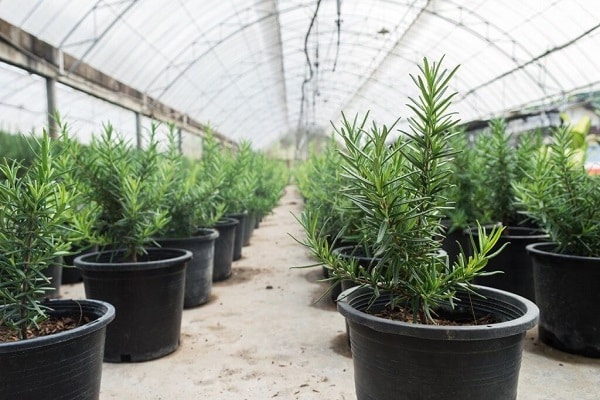
Landing in open ground
It is required to plant the southerner on the beds after the return frosts have passed. When the temperature drops to 5 degrees, rosemary stops growing. If the thermometer shows 0, it will die.
The soil should warm up well. To speed up, it is recommended to cover the proposed location for 5-7 days with plastic wrap. With this method of preparation, the earth will become warm, and moisture will remain completely.
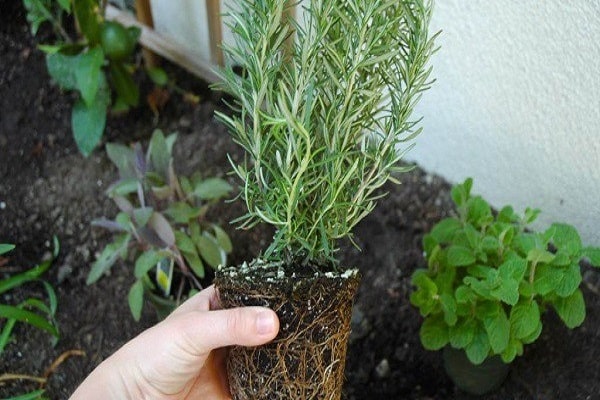
The plantings should be covered with a double layer of white lutrasil. This will protect them from sunburn and night cold. In the absence of non-woven fabric, it is recommended to use any light-colored fabric and perforated film.
When the weather is warm (15-20 degrees), the shelter should be removed. It is possible to grow rosemary in the open field if you create comfortable conditions for the plant.
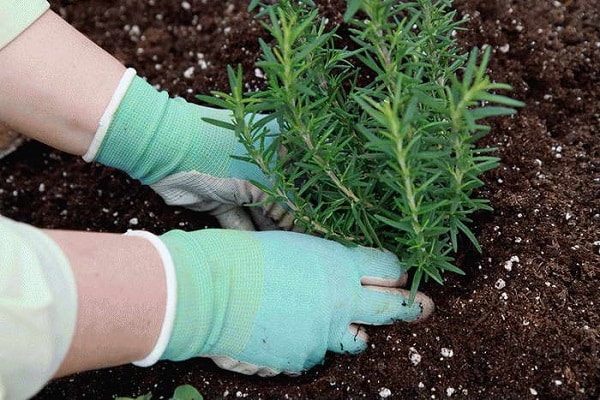
How to prepare the ground
The inhabitant of the Mediterranean prefers light, moisture-permeable, alkaline soil. Rubble is required. The landing area should be prepared in advance:
- analyze acidity using litmus paper: acidic soil needs to be limed;
- heavy earth should be sanding (1 square meter bucket);
- dig well, remove weeds;
- add crushed stone (1 kg per square meter);
- add phosphorus-potassium fertilizers;
- plant rosemary after warming up the earth.
Properly prepared soil will provide the gardener with healthy plants with fragrant shoots.
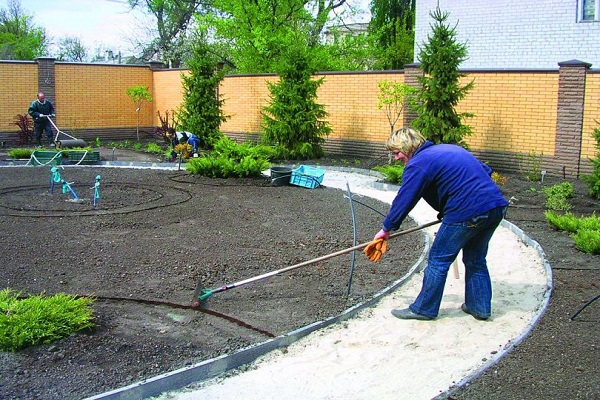
How to plant a plant correctly
Gardeners grow rosemary in two ways:
- from seeds;
- cuttings from an adult plant.
Each method has its supporters.
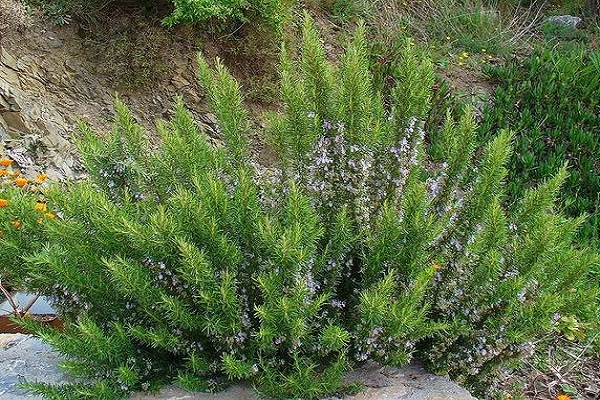
When to sow seeds
Seeds are not planted in the open ground. They are planted at home, and young bushes are placed in a permanent place. For planting in open ground, sow seeds 2-3 months before the expected filling of the ridge.
It is recommended to pre-germinate the planting material. To do this, carefully place the seeds on a damp cloth. It needs to be constantly sprayed from a sprayer.
After pecking, the seeds should be placed in a container on the surface of the prepared soil and lightly sprinkled on top.
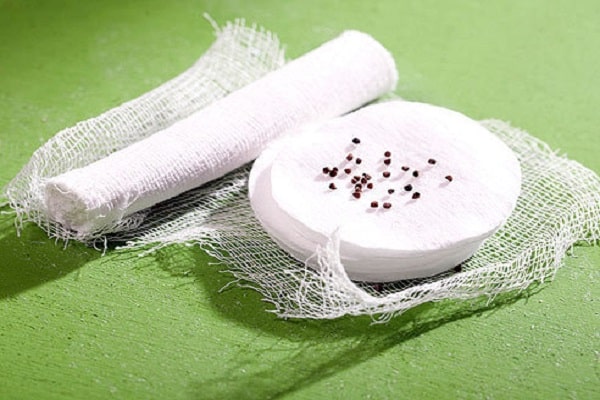
When to plant cuttings
When planting cuttings, use pre-rooted or just cut. To do this, use one-two-year shoots 10-15 cm long.
They should be cut in the spring (March to May). Cut the upper part at a right angle, the lower one at a 45 degree angle. Dip the lower cut into any rooting stimulator. Stick the shoots into moist soil or place them in water. Organize a greenhouse on top. The plant should not be in direct sunlight.
With this method, the cuttings take root within a week.
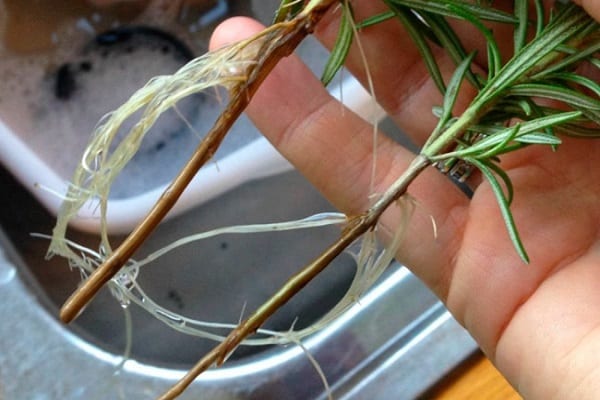
Conditions for good growth outdoors
The successful cultivation of rosemary requires the gardener to create a comfortable environment.
Lighting and temperature
The shrub prefers good lighting. A long sunny day is what he needs. Comfortable temperature - 18-25 degrees Celsius. But even at a lower (positive) or high level, it develops enough. The shrub will enjoy a warm climate with moderate rainfall.
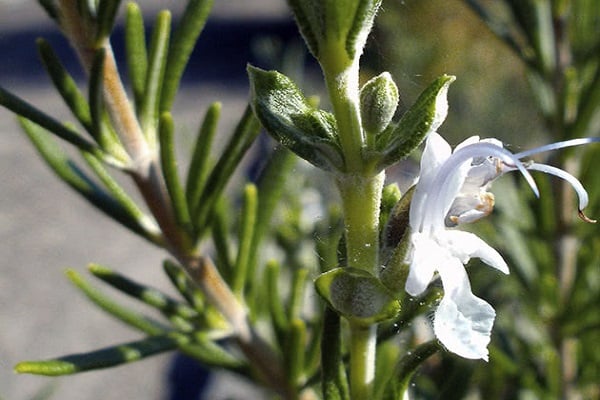
How to water
The shrub is able to withstand a short period of drought. But the quality of cut shoots decreases. The gardener should not allow extreme situations. Watering rosemary is required as the soil underneath dries up. It is important to avoid stagnant water and waterlogging of the soil.
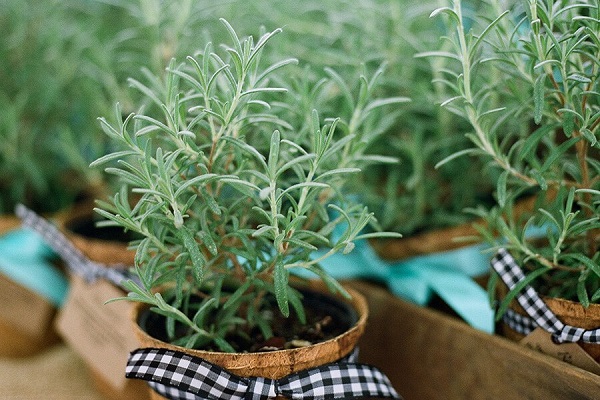
Loosening, weeding and feeding
Rosemary loves free air access to the roots. Therefore, you should regularly loosen the soil under the bushes. At the same time, weeds are removed: they deplete the soil and shade the plant.
For feeding, it is recommended to use a complex mineral fertilizer. Application frequency - once a month. It is also necessary to feed the shrub after cutting the shoots.

How to trim
Pruning rosemary for rejuvenation is recommended once every 8 years. Pruning is done down to soil level.After the procedure, young shoots grow.
But there is another kind - formative pruning. It is produced annually in the spring. In this way, gardeners give the plant the desired shape.
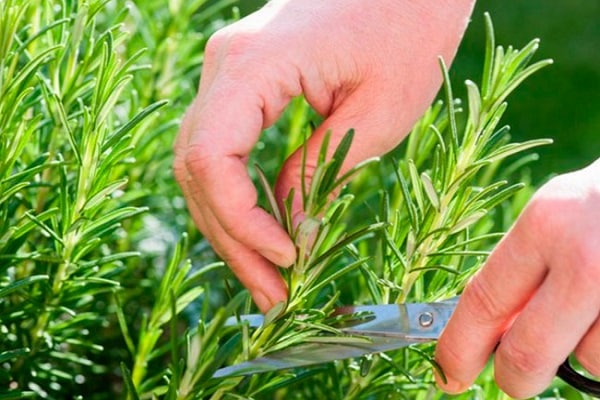
How to cover
It is not necessary to shelter rosemary in regions with warm winters. But where there are slight negative temperatures, the plant should be covered with a white non-woven material.
In cold areas, it is recommended to transplant the bush into a pot and send it home for the winter.
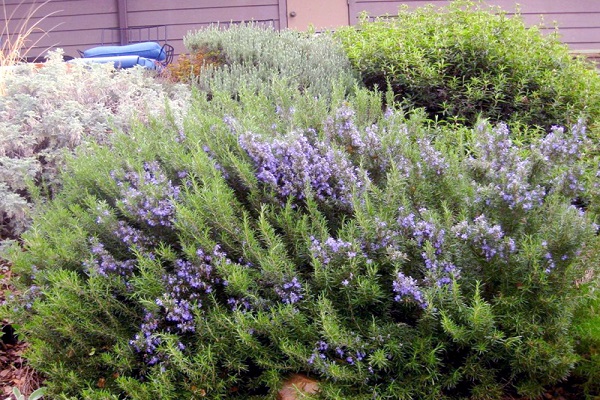
Plant propagation
The shrub is easy to propagate. Gardeners use the following methods:
- grafting;
- layering;
- planting seeds;
- division of the bush.
Often gardeners want to plant rosemary. The search for planting material begins. What if there are no seeds for sale? The solution is simple: buy a spice in the green section of the supermarket. It can be used for grafting. It is important to make sure that the branches look fresh.
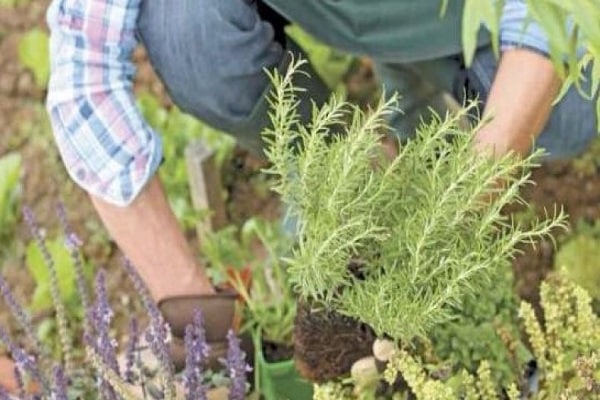
How to divide a bush correctly
The bush should be divided after 7-8 years of its life in the garden. An adult bush is dug up, cut into pieces with a shovel. The upper (ground) parts are cut off and transplanted to a new location. For better survival, the operation should be performed in early spring (as soon as the weather permits). This is how you can plant the ever-growing rosemary in the open field. Advantage of the method: the guest from the Mediterranean is perfectly rejuvenated with this separation.
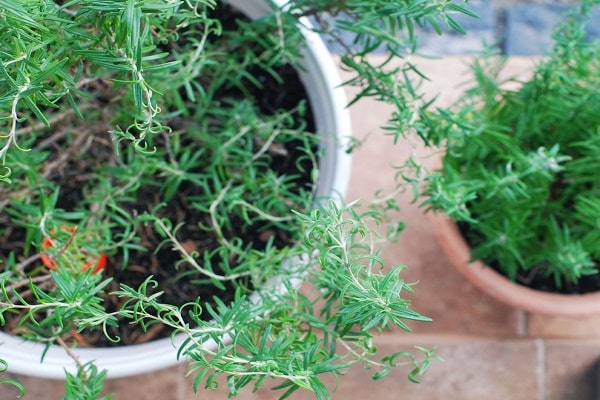
How to cut
The plant propagates easily by cuttings. Shoots of the first or second year should be rooted. The operation can be performed in early spring (at home) or in June (in the country). Cut shoots from the bottom are cleaned of leaves. The lower cut is dipped in a root growth stimulator, the upper cut in melted paraffin.
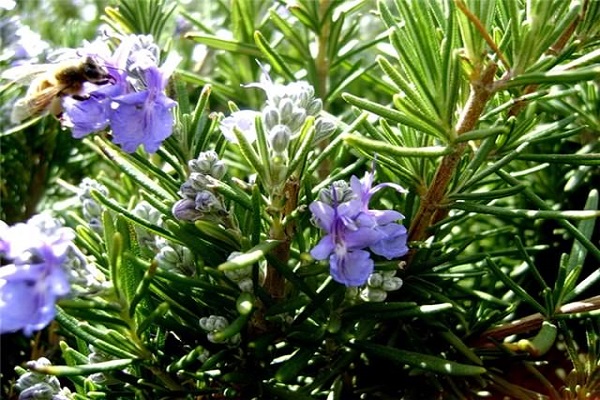
How to root in water
5 mm of rainwater is poured into a vessel made of opaque material. Cuttings are placed in liquid, a plastic bag with perforation is tied on top. The vessel is placed in a bright place, but protected from direct sunlight. With this method, the twigs will give roots in 2-3 weeks. Not lignified shoots take root faster.
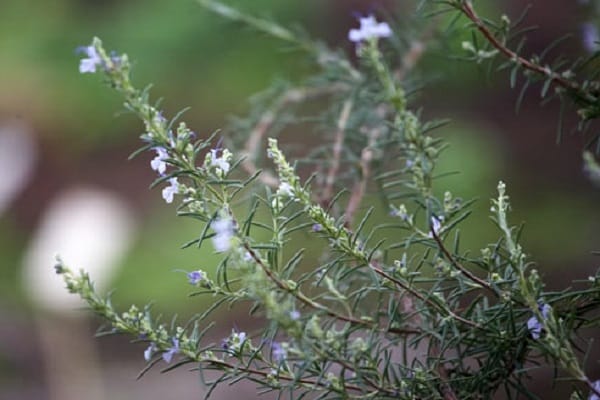
How to root in soil
The gardener should allocate a school bed. How to proceed:
- choose the warmest place in the garden;
- loosen the soil;
- stick the twigs at an angle of 45 degrees at a distance of 5-6 cm from each other;
- set arcs;
- stretch high density white non-woven fabric (20 g / square meter and above);
- press the shelter to the ground and secure.
Then it remains to monitor the soil moisture: as soon as it dries, gently moisten. When young leaves begin to appear, the cuttings are ready for planting on the ridges. The method allows twigs to take root in 3-4 weeks.
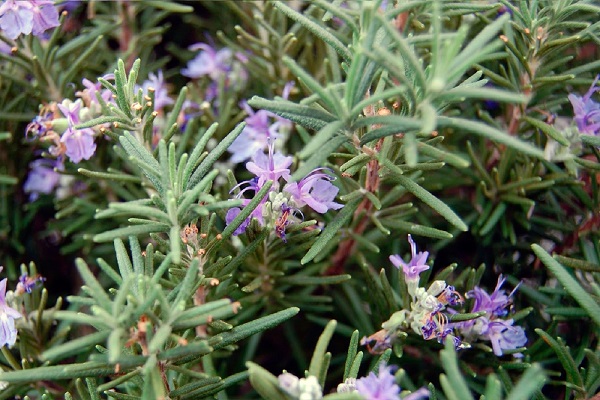
How to lay down
Reproduction of rosemary by layering does not cause difficulties even for inexperienced gardeners. In May-June, the shoot of the 2nd year is slightly incised across, slightly pushed apart at the site of the cut. Then dipped in a root former, pinned to the ground and sprinkled with soil from above. The top of the branch is cut off. This is necessary in order for the plant to grow its root system better. Within 3 months, the layers are regularly moistened. The rooted shoot is ready next spring.
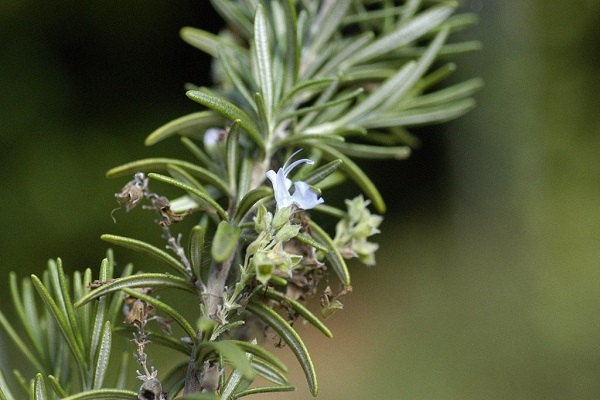
How to get cuttings without pruning
Gardeners are familiar with an ingenious way to get rooted cuttings without cutting:
- choose a shoot of the 1st or second year with a length of 15-20 cm;
- cut off the top (for intensive root formation);
- clean it from 5-7 cm leaves in the middle;
- a bag is made from a film with holes and tied from below from the peeled stem;
- fill the film with wet sphagnum or neutral peat;
- loosely tie a bag on top of the peeled stem.
Then the gardener needs to monitor the regular moistening of the contents of the envelope. As soon as the white roots appear, the shoot is ready to be planted in a permanent place.
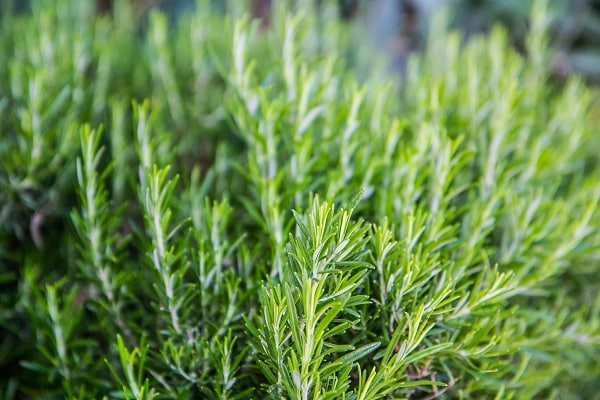
How to propagate by seeds
This method is suitable for obtaining material of rare varieties.The method is quite laborious. How to proceed:
- check seeds for germination in water (empty ones will float, full ones will drown);
- soak them in aloe vera juice or potassium humate for 6-8 hours;
- scatter on the soil surface;
- moisten a little and sprinkle with sand on top;
- cover on top with a film with holes;
- put in a warm place (22-25 degrees Celsius).
The seeds will germinate only after a month. All this time, the gardener must monitor the moisture content of the soil and remove condensation from the film. As soon as the leaves appear, the shelter should be removed. It's time to put the container on the lightest window sill or take it out to a heated greenhouse.
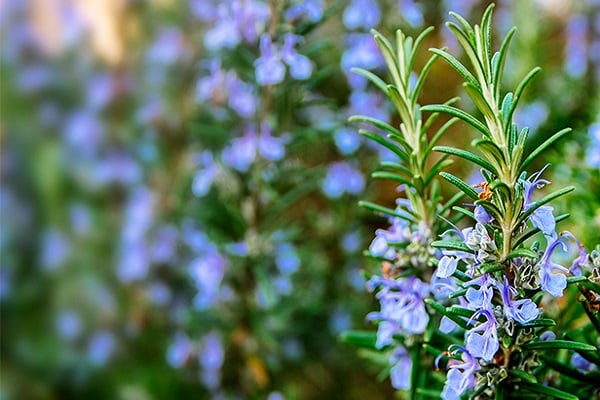
How to prepare rosemary for wintering
In regions with cold winters, transplanting into a pot and moving to an apartment will help preserve the plant.
In areas with a warm climate, it is recommended to trim, feed and cover the rosemary in autumn with non-woven material.
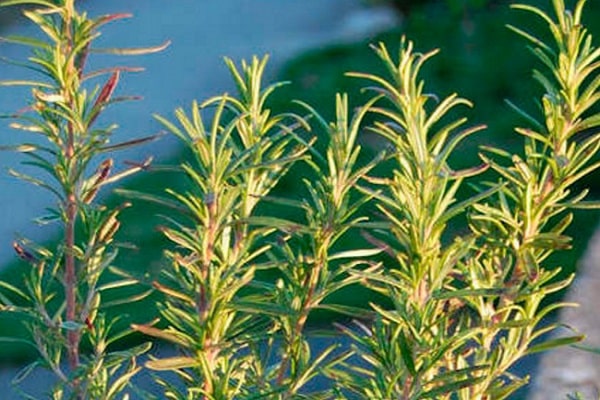
Pests and diseases
Spice is threatened by a spider mite. This happens during dry periods or with improper watering.
Fragrant plants are readily eaten by the scale insect. To protect against these pests, it is recommended to maintain high air humidity around the plantings.
With excessive moisture, the plant becomes moldy. Violation of growing conditions leads to a deterioration in the consumer qualities of cuttings.
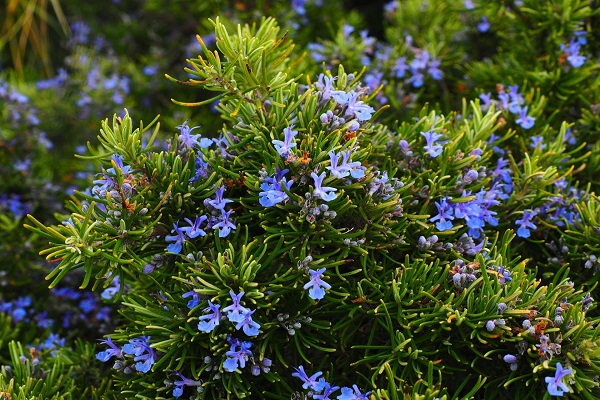
Where is rosemary used?
The spice's aroma and its chemical composition explain its use in various fields. In the culinary arts of Italy, Spain, France, it is impossible to cook lamb dishes without twigs. The spice goes well with fish and seafood.
The medicinal effect is used in the treatment of bacterial and viral diseases. Gargling helps relieve sore throat. With a cold, cold inhalations with an infusion of the plant are useful. Planted in a flowerbed, it makes the air healthy.
